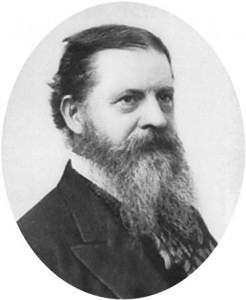 The phrase that sums up the attitude and behaviour of an effective Improvement Scientist is respectful challenge. The challenge part is the easier to appreciate because to improve we have to change something which implies that we have to challenge the current reality in some way. The respect part is a bit tricker.
The phrase that sums up the attitude and behaviour of an effective Improvement Scientist is respectful challenge. The challenge part is the easier to appreciate because to improve we have to change something which implies that we have to challenge the current reality in some way. The respect part is a bit tricker.
One dictionary definition is: Respect gives a positive feeling of esteem for a person or entity. The opposite of respect is contempt.
This definition gets us started because it points to what happens inside our heads – feeling respected is a good feeling; feeling disrespected is a bad one. Improvement only happens and is sustained when it is strongly associated with good feelings. That is how our the caveman wetware between our ears works. So respect is a fundamental component of improvement.
The animation illustrates several aspects of respect. One is the handshake. It is one of those rituals that on the surface seems illogical and superfluous but it has deep social and psychological importance. I once read that it comes from the time when men carried swords and the hand shake signifies “I am not holding my sword“. The handshake is an expression of extending mutual trust using a clear visual signal – it is a mark of mutual respect. The other aspect is signified by the neckties. Again an illogical and superfluous garment except that it too broadcasts a signal – the message “I have prepared for this meeting by taking care to be clean and tidy because it is important“. This too has great social significance – in the past the biggest killer was not swords but something much smaller and more dangerous. Germs. People knew that disease and dirt were associated and that meant a dirty person was a dangerous one. Cleaning up was much more difficult in the days before piped water, baths, showers, washing machines and soap – so to put effort into getting clean and tidy was a mark of great respect. It still is.
So if we want to challenge and influence improvement then we must establish respect first. And that means we have to behave in a respectful manner. And that means we have to think in a respectful way. And that means we have to consciously not behave in an unintended disrespectful manner. Our learned rituals, such as a smile, a handshake and a hello, help us to do that automatically. Unfortunately it is more often what we do not do that is the most disrespectful behaviour. And we all fall into these traps.
Unintended outcomes that result from what we do not do are called Errors of Omission (EOO) – and they are tricky to spot because there is no tangible evidence of them. The evidence of the error is intangible – a bad feeling.
For example, not acknowledging someone is an EOO. This is very obvious in social situations and it presses one of our Three Fears buttons – the Fear of Rejection. It is very easy to broadcast to whole roomful of people that you do not respect someone just by obviously ignoring them. And the higher up the social pecking order you are the greater the impact: for two reasons. First because followers unconsciously copy the behaviour of the leader; and second because it broadcasts the message that disrespectful behaviour is OK.
Contempt is toxic to a collaborative culture and blocks significant, sustained improvement.
 In the modern world we have so many more ways that we can communicate and therefore many more opportunities for communication EOOs. The most fertile ground for EOOs is probably email. It is so much easier to be disrespectful to a lot of people in a short period of time by email than just about any other medium. Just failing to acknowledge an email question or request is enough. Failing to put in the email-equivalent of a handshake of Dear <yourname> …. message …. Regards <myname> is similar.
In the modern world we have so many more ways that we can communicate and therefore many more opportunities for communication EOOs. The most fertile ground for EOOs is probably email. It is so much easier to be disrespectful to a lot of people in a short period of time by email than just about any other medium. Just failing to acknowledge an email question or request is enough. Failing to put in the email-equivalent of a handshake of Dear <yourname> …. message …. Regards <myname> is similar.
Omitting to communicate last minute changes in a plan is an effective way to upset people too!
And perhaps the most effective is firing a grapeshot email in the hope that one will hit the intended target. These two examples highlight a different form of disrespect: discounting someone else’s time – or more specifically their lifetime.
When we waste our time we waste a bit of our life – and we deny ourselves the opportunity to invest that finite and precious lifetime doing something more enjoyable. Time is not money. Money can be saved for later – time cannot. When we waste an hour of our lives we waste it forever. If we do that to ourselves we are showing lack of self-respect and that is our choice – when we do it to others we create a pervasive and toxic cultural swamp.
 One of the first steps in the process of improvement is to engage and listen and one tool for this is The 4N Chart® – which is an emotional mapping technique. Niggles are the Negative Emotions in the Present together with their Be-Causes. The three commonest niggles that people consistently report are car parking, emails and meetings. All three involve lifetime wasting activities. The cumulative effect is frustration and erosion of trust which drives further disrespectful behaviour. The end result is a viscous self-sustaining toxic cycle of habitual disrespect.
One of the first steps in the process of improvement is to engage and listen and one tool for this is The 4N Chart® – which is an emotional mapping technique. Niggles are the Negative Emotions in the Present together with their Be-Causes. The three commonest niggles that people consistently report are car parking, emails and meetings. All three involve lifetime wasting activities. The cumulative effect is frustration and erosion of trust which drives further disrespectful behaviour. The end result is a viscous self-sustaining toxic cycle of habitual disrespect.
An effective tactic here is first to hold up the mirror and reflect back what is happening … that is respectful challenge.
The next step is to improving the processes that are linked to car parking, emails and meetings so that they are more effective and more efficient. And that means actively designing them to be more productive – by actively designing out the lifetime wasting parts.








